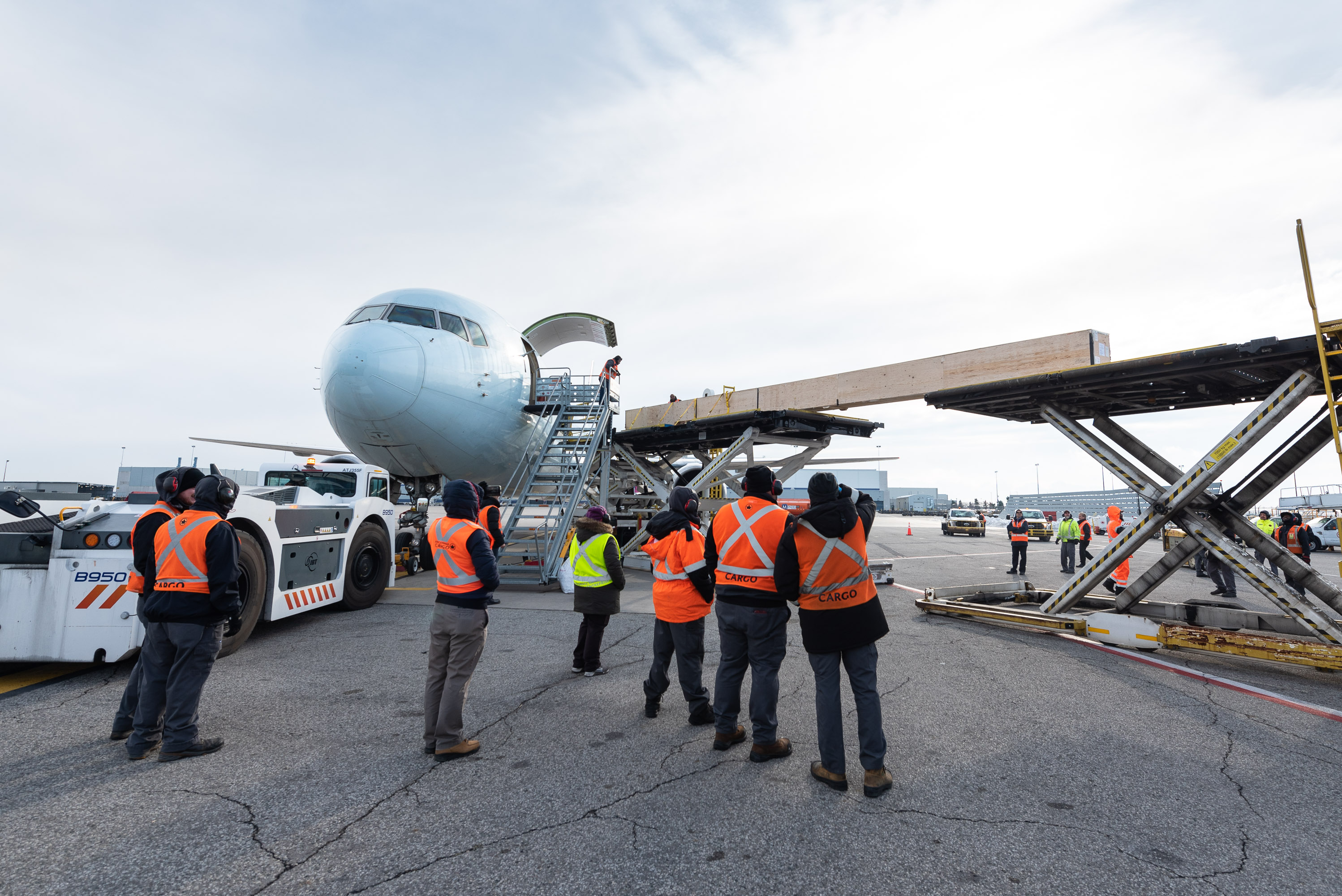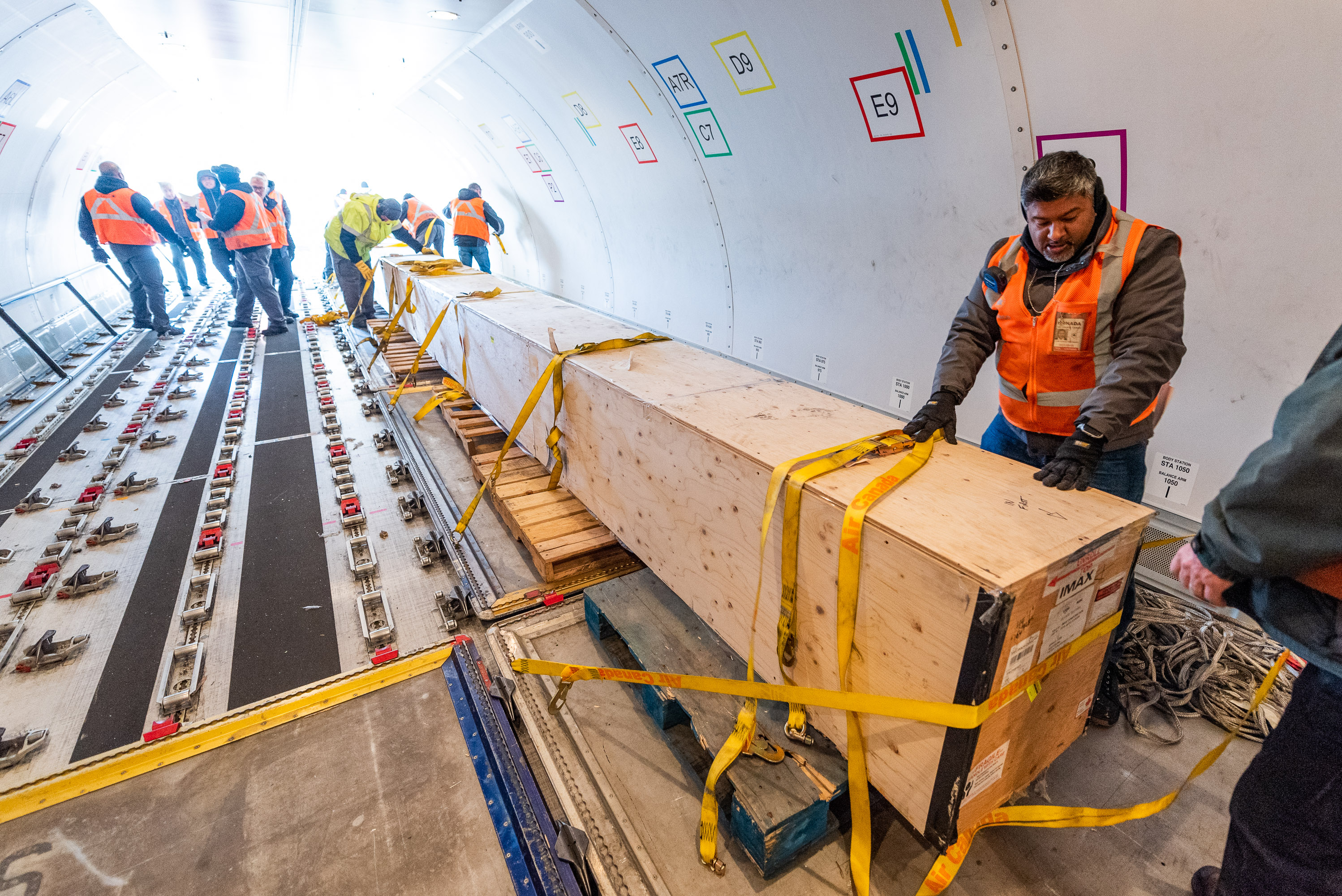Many of us are wowed by the entertainment on massive IMAX screens. But have you ever wondered how they arrive at the theatre?
Well, the story behind how they get moved is just as jaw-dropping and Air Canada Cargo worked with OEC Canada, a global freight forwarder, to play a starring role in a recent performance.
While Air Canada Cargo moves some pretty large items with its Boeing 767 freighters, the shipment of an IMAX screen from Toronto to Quito in November put the aircraft and the Air Canada Cargo teams to the test. The 44-foot long, 800-kilogram crate that housed the screen was one of the largest item Air Canada Cargo has fit into the 767.

The team at Air Canada Cargo worked with OEC to develop the creative solutions required to have the crate housing the IMAX screen fit inside the 767.
“We had to think outside the box because this was something we never did before, and despite some initial thoughts of ‘what did we get ourselves into,’ everyone on the team bought into the challenge and was excited to solve this puzzle. We felt it would be a real feather in our cap,” said Mamun Ansari, Cargo Operations Engineering Manager at Air Canada Cargo.
“Air freighting one of our massive screens is by no means a regular occurrence for an IMAX installation, but the anticipated premiere of James Cameron’s ‘Avatar: The Way of Water’ in Quito was certainly a good reason to do it,” said Mark Welton, President, IMAX Theatres. “We wanted to do everything we could to meet the very tight deadlines of our client, and we couldn’t have done it without the expertise of our partners at Air Canada and OEC. We want to thank everyone involved who helped make this happen!”
“OEC and Air Canada Cargo were able to put their knowledge and experience to work to find an outside the box solution to ship the screen to its final destination. In doing so, that saved several days off the shipping time and avoided the need to move the screen through a U.S. gateway, ensuring the screen arrived on site in a timely manner so the show could go on. I am extremely proud of the work done by both our teams to get the job done,” said Marc Bibeau, President and CEO, OEC Canada.
Air Canada Cargo had never transported something this long in the 767s, which meant the team literally had to write the manual on how to properly and safely ship the screen.
That task fell to Ansari, who oversaw the development of the engineering plans for this unique shipment. It took days to put together and included building a mock-up of the crate using ABS pipes to ensure a proof of concept was developed to ensure everything would work as planned. That planning also involved working closely with Air Canada Cargo’s procedures and safety team, who vetted each step of the meticulous plan to ensure it was safe for employees and the cargo alike.

The plan involved using two loaders, placed at a canted angle to the 767, that would simultaneously lift the crate, while a team of up to 20 Air Canada Cargo employees helped manoeuvre the crate into position inside the main deck. After several hours of methodical movements, the crate was in its final resting place and secured for its flight to Quito.
Once there, the team in Quito did an equally impressive job unloading the screen, with their own plan that would use three loaders to safely get the screen off the 767.
“This was a total team effort and everyone at Air Canada Cargo is really proud of this. There was a lot of excitement around this challenging shipment, but the teams all rose to the occasion and executed the plan,” Mamun Ansari said.